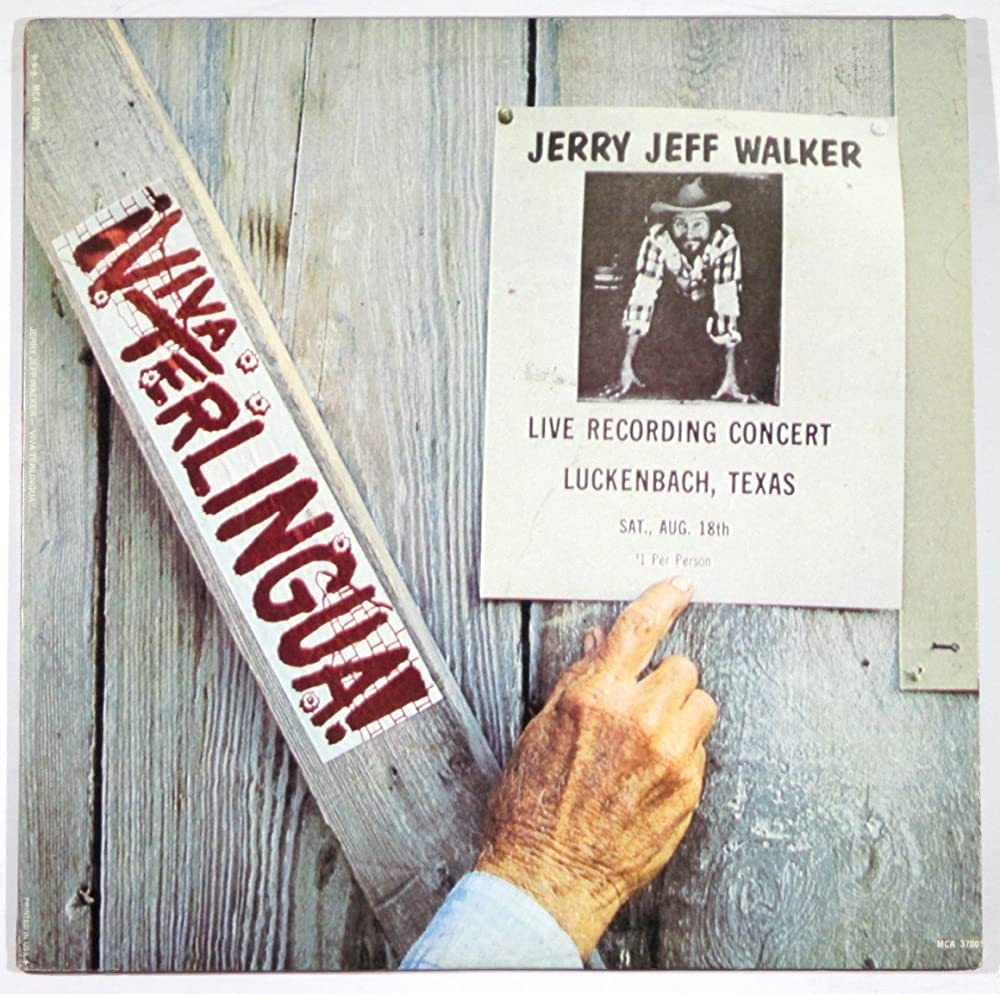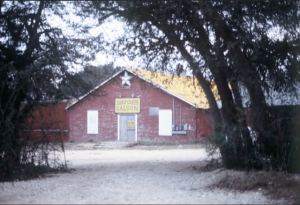
Jerry Jeff Walker’s ¡Viva Terlingua! album cover courtesy UMG/MCA Nashville.
Back in 1986, while Stevie Ray Vaughan was becoming an MTV guitar hero, three Austin acts—Charlie Sexton, the Fabulous Thunderbirds, and Timbuk3—had Top 20 hits, making the year a great one in touting the Texas capital as a vital music scene.
But if we’re using national influence, creative energy, and a vibrant club circuit as metrics, no 365-day period in Austin history tops 1973. That was the year Willie Nelson put on his first Fourth of July Picnic in Dripping Springs, Doug Sahm moved to Austin and wrote “Groover’s Paradise” about his new homebase, and the burgeoning progressive country scene had its own radio station with KOKE-FM.
Michael Martin Murphey gave the hippie Texan movement a theme in early ’73 when he sang “I just want to be a cosmic cowboy.” By year’s end, though, the whole town was singing along with Gary P. Nunn: “I wanna go home with the armadillo.” The scene was too big for just one anthem.
Murphey’s Cosmic Cowboy Souvenir was followed in June by Willie Nelson’s Shotgun Willie and Waylon Jennings’ Honky Tonk Heroes, a pair of albums that are considered the opening blasts of “outlaw country,” headquartered in Austin. Then came the great Hill Country party album ¡Viva Terlingua! by Jerry Jeff Walker and his compadres, recorded live at Luckenbach in August. When it came to albums that define an era, Austin was holding four aces.
Flaunting a Lone Star State identity, Austin’s “Summer of Love” ditched the headband and sandals for a floppy straw cowboy hat and boots (but kept the fringed vest).
Invigorated by the lowering of the drinking age to 18, the Austin club scene also grew up fast that year, transforming a Sixth Street of skin flicks, pawn shops, and used furniture stores into a nightlife district overrun with tourists and college students having their first legal beer.
Further revitalizing the downtown music scene was the gas crisis of 1973-74, when an embargo by Arab oil-producing countries caused long lines, high prices, and empty dance halls on the outskirts of town. Audiences wanted their clubs nearby, and being able to walk between venues was a plus. A trio of new country music clubs in the Sixth Street district—Alliance Wagon Yard, River City Inn, and the Cotton Exchange—bonded to allow customers to barhop on only one cover charge, usually $2 or $3.
The 1,500-capacity Armadillo World Headquarters located on Barton Springs Road at Riverside Drive was king, booking the likes of Van Morrison, Frank Zappa, Bette Midler, Gram Parsons, and Freddie King. But the Austin club scene, on any given night, might feature more intimate shows: John Prine at Castle Creek, Freda and the Firedogs at Split Rail Inn, The Flatlanders at the One Knite, Steve Fromholz at the original Saxon Pub, and Austin’s hottest rock band Too Smooth at Mother Earth.

The Soap Creek Saloon was tucked away from the other music venues in Austin. Photo by Sam Yeates.
The most prominent addition to the local club scene was Soap Creek Saloon, which opened in the wilds of West Lake Hills in March. With a 250-capacity, and regular appearances from Doug Sahm and Marcia Ball, it was a cozier Armadillo in the middle of nowhere, up a dirt road with VW-swallowing potholes. Being isolated was one of the things that made “the Honky Tonk in the Hills” special—you had to want to be there, which made everyone feel safer with each other. Another thing that set Soap Creek apart was being that rare music venue at the time which served mixed drinks, after Texas began issuing mixed beverage permits for clubs in 1971.
Around 1973, Roky Erickson came home from three hellish years at Rusk State Hospital and revived his 13th Floor Elevators at a free concert, “Last Bash on the Hill,” just off City Park Road. Unbilled special guest Willie Nelson drove his Winnebago through a crowd of 15,000, and, duly inspired, put on his own festival four months later.
In 1973, Austin’s population rose 5.2% to 290,300—the biggest increase since 1950. And many of the newcomers were musicians, “looking to see what all the fuss was about,” said guitarist Junior Brown, who moved here with a New Mexico country band. “It was a pickin’ party every night. That was the spirit of the Austin music scene back then. Let’s go see and be seen.”
The word got out, and folks have been flocking to Austin ever since, though music is no longer the top draw. You know that magical, mystical light on the horizon just before sunrise? That was Austin in 1973.
To celebrate the 50th anniversary of the opening of Soap Creek Saloon, the Austin Museum of Popular Culture is hosting a concert and exhibition March 17 on the back deck they share with the Arts & Labor film production company at 1000 E. 40th St. Shawn Sahm will play music by his father, Doug, as well as other Soap Creek acts like Townes Van Zandt, Marcia Ball, and Joe Ely. You never know who’s going to sit it. The event starts at 3 p.m. and is also a fundraiser for the museum, with a $20 admission fee.








